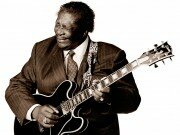
Podcast: |
The world we live in today is very different from what our planet looked like millions of years ago. The plants and animals we see around us and take for granted, in fact, are survivors that learned to adapt and win as the world around them changed.
In a similar vein, much has changed in the world of finance and investing over the past 50 years. Yet, most of us still find comfort in time-tested investment rules… so it’s always good, from time to time, to analyze the ground we stand on and see if old rules still apply… after all, that IS the essence of innovation and growth, our ability to constantly adapt to change… to evolve, survive and win… else we risk becoming evolutionary statistics that did not make it. So, in that spirit, I’ve been pondering how my professional world – of finance and investments – has changed over the years, and what we need to do differently to succeed in our investments going forward.
As I did my thinking and research, I came across a pretty relevant article in U.S. News. The article, by Joanne Cleaver, is titled which I plan to share with you today.
The 10 Money Rules That No Longer Work
Old School Rule #1 – which I think many of my older listeners might recall… it goes something like this… the percentage you should have in stocks is 100 minus your age.
The new rule: Rebalance your portfolio to grow consistently.
The idea behind the old “rule of 100″ is that the younger you are, the more risk you can tolerate. But technology, computer-based algorithmic and automatic trading, greater capital flows and liquidity, etc., have changed the ways markets now move… very different from 30-40 years ago before the widespread adoption of technology by Wall Street.
And, as the market crash of 2008 proved, recovering a 30 percent loss is not gaining 30 percent, but gaining 50 percent, because you are rebuilding from a shrunken base… so investors need to react to a harsher trading environment and rebalance portfolios more frequently to meet investment goals.
Old School Rule #2: Retirees should be in bonds.
New rule: Retirees need growth.
In the past, bonds used to pay reasonable rates of interest that were typically at or ahead of inflation, so most investors found safety with bonds as they grew older. But, with the ultra-low interest rates that we’ve had for the past few years, bond returns bear much higher interest-rate risk, haven’t kept up with inflation and have fallen well short of equity investments… so bond-oriented investors need to reassess their strategy and consider keeping a slice of their portfolio in growth investments.
Old School Rule #3: Count on an 8 percent compound growth rate.
New rule: You probably can’t count on it, at least if you have a balanced portfolio.
Just do the math, with today’s five-year Treasury yield at less than 1.4%, and assuming equities deliver 6% per year, a portfolio that is half stocks and half bonds will earn less than 4%- that’s about half the 8% rate and assumes stocks will perform reasonably well. So investors need to recalibrate their return expectations in this dramatically low interest rate environment and consider saving a lot more while also increasing their exposure to equities for long-term growth.
Of course, the challenge here is that with solid equity gains over the past five years, it’s hard to find stocks that aren’t overpriced and there’s always the risk of a near-term correction… but as history has repeatedly shown us, over the long-run, investors that stick with equities typically do quite well.
Old School Rule #4: In retirement, you can live on 75% of what you need today.
New rule: It’s more like 100 percent.
When you first retire, you want to do everything you’ve always dreamt of… move to sunny Florida, take a vacation, golf three times a week, go fishing, etc… but all that takes a lot of money, so you do typically sink into your savings in those first few years of retirement euphoria. Then life slows down a little but medical costs pick up. Inflation marches on regardless, and keeps eroding your buying power. And these hard truths shatter the delusion that you can live more cheaply in retirement than you do now.
So think of ways in which you can earn passive income in retirement such as from commercial real estate, and consider diversifying your portfolio to include some nontraditional assets such as commodities, for example.
Old School Rule #5: Withdraw 4% annually from your portfolio.
New rule: Sure, if you’d like to guarantee that you’ll go broke.
It used to be that the 4% rule would stretch your money over 30 years. But that assumes a 50% allocation to stocks, which many retirees find too risky. So the old 4% withdrawal rule is crumbling in today’s merciless economy.
A safer initial withdrawal rate today, assuming 50% exposure to stocks and minimal investment fees, might be 3.2% – 3.5% for a 30-year horizon. What greatly helps your portfolio here is if you reduce the fees you pay by going with low-cost funds and advisors that act like fiduciaries who place client interests ahead of their own fees.
Old School Rule #6: For a comfortable retirement, $1 million is “the number.”
New rule: Try for $2 million to breathe easier.
People used to think that if they had a million dollars, they were set, but with improved healthcare and living standards, lifespans have increased significantly… so if you retire at 65, and live another 35 years, a million just won’t cut it. To net $5,000 a month after fees and taxes, you have to pull out $75,000 a year, or 7% of $1 million, and that’s not going to make that million last too long. So definitely increase your retirement savings, just to be on the safe side.
Old School Rule #7: You probably can retire on the income numbers projected on your 401(k) statement.
New rule: Don’t coast on the wisdom of footnotes.
Projections included in 401(k) statements are sort of dangerous because they don’t take into account real-life variables… yet, people fixate on these estimates and lull themselves into a false sense of comfort about making it through retirement. The reality is, you don’t know how they arrived at that number and it’s best that you consult a financial advisor and model your portfolio goals on data that’s new and relevant.
Old School Rule #8: Compound interest is magic. Invest early and watch from your easy chair as your investments grow.
New rule: Compound interest sure helps, but experts rarely calculate the compound-deflating inflation, fees and taxes.
Now… I am a firm believer in the magic of compounding… but as I have repeatedly cautioned – inflation, fees and expenses can sizably reduce the benefits of compounding… so, again, do all you can to reduce investment fees and expenses, factor in recent rates of inflation and expenses, and come up with realistic investment goals.
Old School Rule #9: I can retire on my inheritance.
New rule: That works only if your parents die on schedule and don’t leave a pile of medical, legal and other bills behind.
This is for folks who think their parents are millionaires and will leave them with enough… and don’t, consequently, think they need to worry about retirement investing… but parents can live longer than you expect, or get hobbled by costly medical expenses, or have a falling out with their heirs… fortunes can and do disappear overnight, even in the best of cases, so don’t take anything for granted… rich or less rich, do all you can to independently build a nice little nest egg… moreover, if you save independently, you will have higher self-esteem and have happier relationships – with your parents, siblings and everyone else.
Old School Rule #10: Formulas work. They’re math, aren’t they?
New rule: Simple math yields simplistic results. The real world is more complicated.
As I mentioned at the beginning, traditional wisdom is based on historical returns over several mid-century decades that, in retrospect, were remarkably drama-free. But lately, the frequency and adverse impacts of bubbles and crashes have been a lot more destructive. So adapt to this new world… don’t bet on your own smarts to beat the market, and take advantage of automated systems such as target-date funds to stay ahead in the investing game.




















